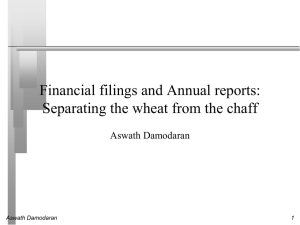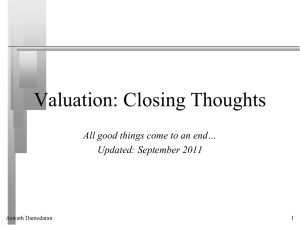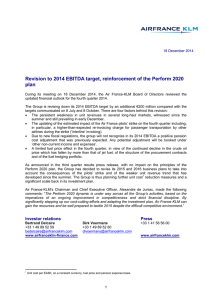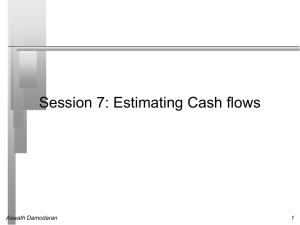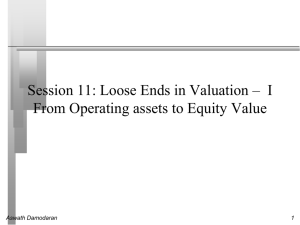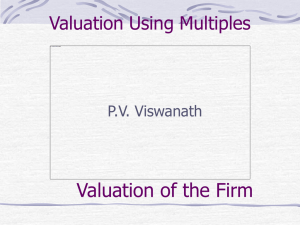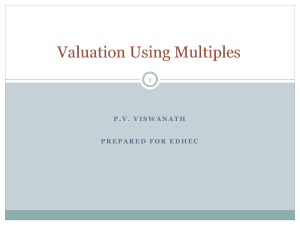Session 16: More Earnings Multiples
advertisement
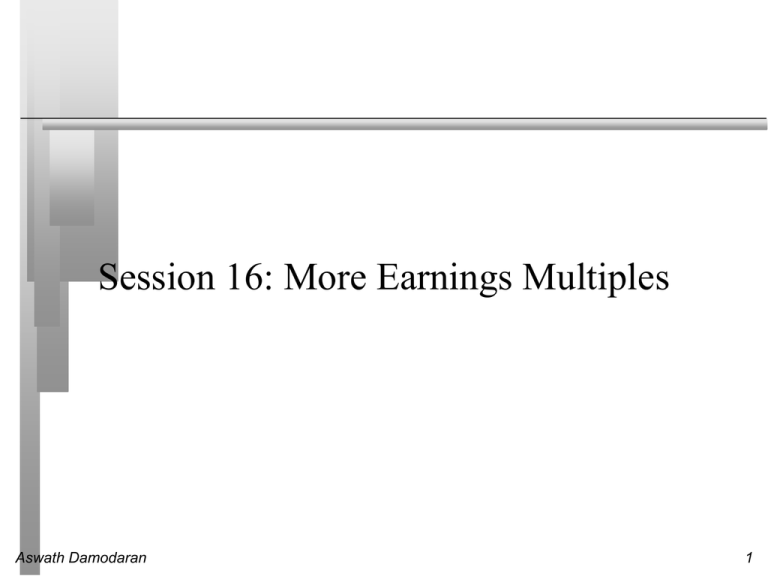
Session 16: More Earnings Multiples Aswath Damodaran 1 Value/Earnings and Value/Cashflow Ratios While Price earnings ratios look at the market value of equity relative to earnings to equity investors, Value earnings ratios look at the market value of the operating assets of the firm (Enterprise value or EV) relative to operating earnings or cash flows. EV = Market value of equity + Debt – Cash The form of value to cash flow ratios that has the closest parallels in DCF valuation is the ratio of Firm value to Free Cash Flow to the Firm. • FCFF = EBIT (1-t) - Net Cap Ex - Change in WC In practice, what we observe more commonly are firm values as multiples of operating income (EBIT), after-tax operating income (EBIT (1-t)) or EBITDA. Aswath Damodaran 2 Enterprise Value/EBITDA Multiple The Classic Definition Value Market Value of Equity + Market Value of Debt = EBITDA Earnings before Interest, Taxes and Depreciation The No-Cash Version Enterprise Value Market Value of Equity + Market Value of Debt - Cash = EBITDA Earnings before Interest, Taxes and Depreciation Aswath Damodaran 3 Enterprise Value/EBITDA Distribution – US – January 2011 Aswath Damodaran 4 Enterprise Value/EBITDA : Global Data 6 times EBITDA seems like a good rule of thumb.. Aswath Damodaran 5 But not in early 2009… Aswath Damodaran 6 The Determinants of Value/EBITDA Multiples: Linkage to DCF Valuation The value of the operating assets of a firm can be written as: FCFF1 EV0 = WACC - g The numerator can be written as follows: FCFF Aswath Damodaran = EBIT (1-t) - (Cex - Depr) - Working Capital = (EBITDA - Depr) (1-t) - (Cex - Depr) - Working Capital = EBITDA (1-t) + Depr (t) - Cex - Working Capital 7 From Firm Value to EBITDA Multiples Now the value of the firm can be rewritten as, Dividing both sides of the equation by EBITDA, Since Reinvestment = (CEx – Depreciation + Working Capital), the determinants of EV/EBITDA are: • • • • Aswath Damodaran The cost of capital Expected growth rate Tax rate Reinvestment rate (or ROC) 8 A Simple Example Consider a firm with the following characteristics: • • • • • • Aswath Damodaran Tax Rate = 36% Capital Expenditures/EBITDA = 30% Depreciation/EBITDA = 20% Cost of Capital = 10% The firm has no working capital requirements The firm is in stable growth and is expected to grow 5% a year forever. 9 Calculating Value/EBITDA Multiple In this case, the Value/EBITDA multiple for this firm can be estimated as follows: Value = EBITDA Aswath Damodaran (1- .36) .10 -.05 + (0.2)(.36) 0.3 0 = 8.24 .10 -.05 .10 - .05 .10 - .05 10 The Determinants of EV/EBITDA Tax Rates Reinvestment Needs Excess Returns Aswath Damodaran 11 Value/EBITDA Multiple: Trucking Companies: Is Ryder cheap? Aswath Damodaran 12


